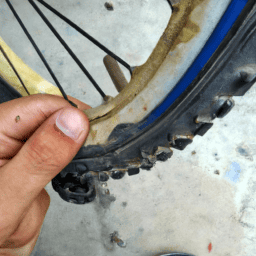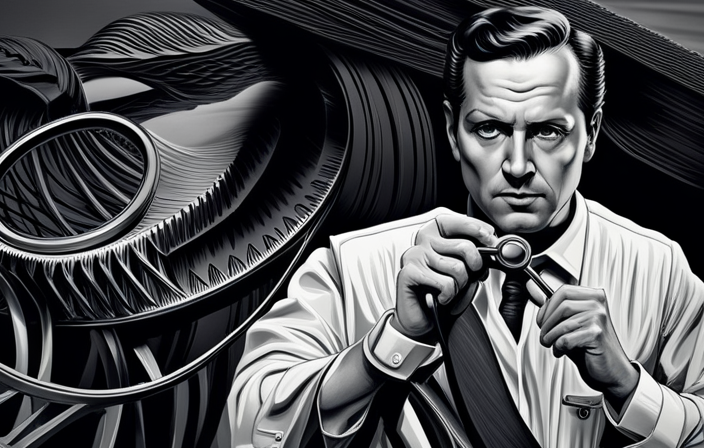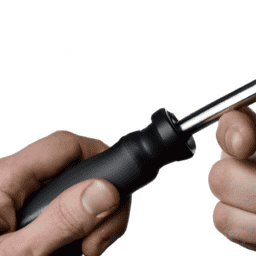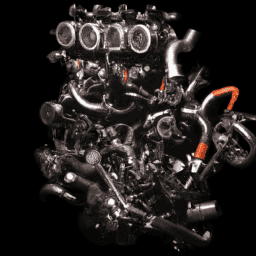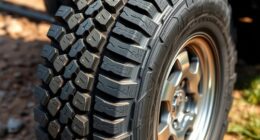As someone who loves biking, I’ve figured out that a solidly laced wheel makes all the difference for a ride that’s both smooth and safe. It keeps your bike steady and secure. Now, weaving through 32 spokes on a bicycle wheel might seem like a huge challenge, especially if you’re just starting out. But don’t sweat it! With the proper tools and some clever tricks, you’ll find that lacing a wheel is not only doable but actually pretty enjoyable.
Before we dive into the process of lacing a bicycle wheel with 32 spokes, let me share a little history about bike wheels. Did you know that the first bicycle wheels were made entirely of wood? It wasn’t until the late 19th century that wire-spoked wheels were introduced, and they quickly became the standard.
Today, most bicycle wheels are made of aluminum or carbon fiber, and the number of spokes can vary depending on the intended use of the bike. In this article, we will focus on lacing a wheel with 32 spokes, which is suitable for most road and hybrid bikes.
So, let’s get started!
Key Takeaways
- A well-laced wheel is important for a smooth and safe ride, and requires appropriate tools, cleaning, and checking for damage.
- Spoke tension is crucial for a strong and stable wheel, and should be tested by spinning the wheel and checking consistency.
- History of bicycle wheels includes wooden wheels, wire-spoked wheels, and modern aluminum or carbon fiber wheels with 32 spokes as a standard.
- Steps for lacing a wheel include cleaning and lacing the wheel, tensioning the spokes evenly, truing the wheel, checking for movement or creaking, and checking the final tension with a tension meter.
Gather the Necessary Tools
You’re gonna need some tools to get started, so grab a spoke wrench, a nipple driver, a truing stand, and a spoke tension meter. Choosing appropriate tools is important since the wrong tools can easily damage your spokes and nipples.
For instance, using pliers instead of a spoke wrench can round off the edges of your nipples or strip the spoke threads. Similarly, using a screwdriver instead of a nipple driver can damage the nipple flats and make it impossible to turn the nipple.
Another common mistake is not using a truing stand. Trying to true a wheel while it’s still on the bike is difficult and inaccurate. A truing stand allows you to see the wheel from different angles and make precise adjustments.
Finally, a spoke tension meter is essential for ensuring that all your spokes are evenly tensioned. With these tools in hand, you can move on to preparing the rim and hub for lacing.
Prepare the Rim and Hub
Before starting the process, it’s important to ensure that the rim and hub are clean and free of any debris or damage. Rim cleaning involves wiping down the rim with a clean cloth to remove any dirt or grease. It’s important to check for any scratches or dents on the rim that could affect the integrity of the wheel. If there are any visible damages, it’s best to replace the rim before lacing the wheel.
Hub lubrication involves applying a small amount of grease to the hub flanges where the spokes will come into contact. This will help prevent friction and corrosion over time. Spoke length measurement is also an important step in preparing the wheel. Using a spoke length calculator, measure the length needed for each spoke before selecting the appropriate nipples for the wheel. This will ensure that the spokes fit snugly in the hub and rim, providing a strong and durable wheel.
With these preparations complete, it’s time to start lacing the wheel.
Start Lacing the Wheel
Alright, it’s time to start lacing the wheel. First things first, I always begin with the cross pattern.
This means starting with a spoke on the hub and crossing it over two other spokes before inserting it into the rim. As I go around the wheel, I make sure to alternate sides and crosses to ensure even tension.
Speaking of tension, it’s important to periodically check and adjust the tension of the spokes as you go to ensure a strong and stable wheel.
Begin with the Cross Pattern
Now, let’s get this wheel rolling with the cross pattern, shall we? The cross pattern is the most common lacing technique for bicycle wheels, and it involves weaving the spokes over and under each other in a crisscross pattern. It provides a strong, durable wheel that can handle heavy loads and high speeds. There are many variations of the cross pattern, each with its own benefits, but the basic pattern is as follows:
| Cross | Spoke 1 | Spoke 2 | Spoke 3 | Spoke 4 | Spoke 5 |
|---|---|---|---|---|---|
| 1-2 | Over | Under | Over | Under | Over |
| 3-4 | Under | Over | Under | Over | Under |
| 5-6 | Over | Under | Over | Under | Over |
| 7-8 | Under | Over | Under | Over | Under |
As you can see from the table above, the spokes are grouped into pairs, and each pair crosses over and under the other pairs. This creates a stable, evenly tensioned wheel that can handle the stress of riding. However, there are other lacing techniques that can provide different benefits, such as radial lacing, which places all the spokes in a straight line from the hub to the rim. We will explore some of these techniques in the next section, but first we need to cover alternate sides and crosses.
Moving on to alternate sides and crosses, this technique involves lacing the spokes in a pattern that alternates between the left and right sides of the wheel. This creates a more balanced wheel that is less likely to warp or twist under heavy loads or high speeds. By alternating the crosses, the spokes are evenly distributed around the hub and rim, providing a more stable platform for the tire. This technique can be combined with the cross pattern to create a stronger, more durable wheel that can handle the most demanding conditions.
Alternate Sides and Crosses
To create a more balanced and stable ride, you’ll want to alternate the sides and crosses of your spoke pattern. By doing this, you’ll distribute the tension more evenly across the wheel and prevent any wobbling or uneven wear.
Here are some benefits of alternate lacing:
- Improved stability: When you alternate the sides and crosses, you create a more symmetrical wheel which translates into better stability on the road.
- Better load distribution: By distributing the tension evenly across the wheel, you reduce the risk of spoke breakage and improve the load distribution of your weight on the bike.
- Aesthetically pleasing: Alternate lacing can also give your bike a unique look and feel that stands out from the crowd.
As for alternative patterns for 32 spoke wheels, there are several options to choose from including radial lacing, crow’s foot lacing, and three-cross lacing. Each pattern has its own unique benefits and drawbacks, so it’s important to do your research and choose the one that fits your riding style and needs the best.
To ensure a properly laced wheel, the next step is to tension the spokes.
Tension the Spokes
You’re ready to bring your ride to the next level by giving your trusty steed the attention it deserves, starting with tightening up those vital metal connectors that keep your bike rolling smoothly.
One important step in lacing a bicycle wheel with 32 spokes is to properly tension the spokes. Spoke tensioning techniques involve adjusting the tension of each spoke until they are all evenly balanced, creating a strong and stable wheel.
The importance of spoke tension cannot be overstated. An improperly tensioned wheel can lead to wobbling, instability, and even failure while riding. To tension the spokes, use a spoke tension meter to measure the tension of each spoke and adjust as necessary.
Once all spokes are at the proper tension, your wheel will be ready for the final step of finish lacing. With a properly tensioned wheel, your bike will ride smoother and more reliably, giving you the confidence to tackle any terrain.
Finish Lacing the Wheel
As you’re lacing the wheel, you’ll notice the pattern coming together and the spokes forming a secure structure.
Once all spokes are in place, it’s time to start tensioning them. Wheel truing and spoke tensioning go hand in hand, so it’s important to keep an eye on the overall balance of the wheel throughout the process.
Begin by tightening each spoke a little at a time, making sure to keep the tension even across the whole wheel. Use a spoke wrench to make small adjustments as you work your way around, until each spoke is snug and the wheel is perfectly round.
Once you’re satisfied with the tension, give the wheel a final spin and check for any wobbles or inconsistencies.
With the spokes properly tensioned, you can move on to testing the wheel for strength and stability.
Test the Wheel for Strength and Stability
Now it’s time to ensure the wheel is strong and stable, so give it a thorough spin and keep an eye out for any wobbles or irregularities, allowing your excitement to build as the wheel proves to be a reliable component of your ride.
However, don’t get too carried away just yet; there are still a few steps you need to take to ensure the wheel is truly ready for use.
First, check the spoke tension by giving each spoke a gentle squeeze. They should all feel roughly the same, with a slight give but not too much. If any spokes feel noticeably looser or tighter than the others, adjust them accordingly until they all feel consistent.
Finally, stress test the wheel by applying pressure to different parts of the rim with your hands. If you feel any movement or hear any creaking, adjust the spoke tension until the wheel feels firm and stable.
With these steps completed, your newly laced wheel should be ready to roll.
Frequently Asked Questions
How tight should the spokes be when lacing a bicycle wheel?
When lacing a bicycle wheel, it’s important to ensure that spoke tension is even. Common mistakes in spoke tensioning include over-tightening or leaving some spokes too loose, leading to a wobbly wheel. Proper spoke tension ensures a sturdy, balanced wheel.
Can I use different spoke lengths for the front and rear wheels?
Did you know that a difference of just a few millimeters in spoke length can affect the overall strength and stability of a wheel? The spoke length debate for front vs rear wheels is ongoing, with some arguing for alternative spoke patterns for efficiency or aesthetics.
How long does it take to lace a bicycle wheel with 32 spokes?
Efficient techniques, common mistakes, tools needed, and safety precautions can affect the time it takes to lace a bicycle wheel. However, without the context of 32 spokes, it’s difficult to give an accurate estimate.
Is it necessary to use a truing stand when lacing a bicycle wheel?
When lacing a bicycle wheel, using a truing stand is not necessary, but it greatly benefits the process. Truing stand alternatives include a fork or a makeshift stand. However, a truing stand ensures precision and accuracy, making it the ideal choice for wheel lacing.
How often should I check the tension of the spokes after lacing a bicycle wheel?
I check spoke tension every few rides using a spoke tension meter. It ensures proper wheel alignment, prevents spoke breakage, and extends the wheel’s lifespan. Proper tools are necessary for accurate measurements.
Conclusion
Well, that’s how you lace a bicycle wheel with 32 spokes. It may seem daunting at first, but with the right tools and some patience, it can be done by anyone.
It’s important to take your time and make sure each spoke is properly tensioned and aligned. Once the wheel is laced, it’s important to test it for strength and stability. This can be done by spinning the wheel and checking for wobbles or loose spokes.
A well-laced wheel can provide a smooth and reliable ride, so it’s worth putting in the effort to get it just right. Overall, lacing a bicycle wheel may not be the most exciting task, but it’s a crucial part of maintaining your bike.
Taking care of your equipment can make all the difference in your cycling experience, so don’t be afraid to get your hands dirty and give it a try. Who knows, you may even discover a new passion for bike maintenance!

